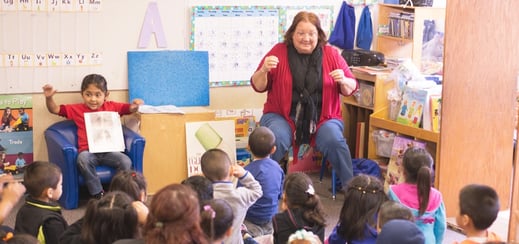
A great transition is one that is efficient, quick, has clear teacher follow through, and all the while, students know what to do and what is expected. Oh! And it must have learning opportunities embedded within.
With all of that, is it possible to complete a smooth transition and still incorporate Instructional Support (IS)? Let’s explore the possibilities!
First, let’s consider the kinds of transitions that happen in classrooms. One we all know well is moving the whole group from one activity to the next, such as from story time to washing hands for snack. Another may be a transition within a whole group activity like when the group sings a song, then takes attendance, and finally moves into morning message time. Finally, there are individual child transitions, such as when a child moves from area to area during center time. All of these transitions provide opportunities to embed Instructional Support strategies into the day.
Whole Group to Whole Group Transitions
One example of Instructional Support that presents itself in most whole group transitions is parallel talk. For example, you can encourage students to chose how they will walk from the carpet to the sink to wash their hands and narrate how the student moves. “Shawna is walking on her tiptoes, oh there she goes tiptoeing around the easel, and now she is hopping to the sink!” An added bonus? You’ve incorporated Regard for Student Perspective by allowing extra freedom of movement!
Another way to add more IS to whole group transitions is by simply engaging with students who are waiting for their turn—it’s amazing how many discussions you’ll be able to facilitate. For example, you could ask students to brainstorm a list of items they might see during an autumn nature walk as they put their coats on.
Whole Group Inter-Activity Transitions
One simple way to add more Instructional Support within a whole group activity, is by asking students to predict outcomes. During carpet time you can ask: “What’s going to happen? Do you think everyone will be here today?”
As the markers come out for message the teacher could add more prediction and brainstorming questions, such as “Can you guess what will be the most important part of our morning message today?” or “What do you think is going to be different about our morning message today?”
Individual Transitions
Finally, those individual child activities present the perfect time to engage in planning with the student. The teacher could ask the student what he would like to do next and continue to support the child’s plans by asking him what materials he will need to engage in that plan. If two children present the same idea for their plan, the teacher could ask them to problem solve how they will accomplish the same activity together.
It is definitely helpful to think through what transitions will happen in a day, and intentionally plan for those moments. Use the Dimensions Guide as a helpful resource. Inside you’ll find transition idea starters.

